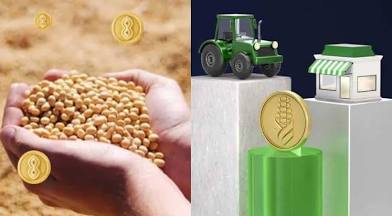IT IS YOUR MONEY
Agriculture Gets a Digital Makeover with Tokenization
Agriculture is embracing tokenization to improve financing, traceability, and investor access. Farms, harvests, and equipment are being turned into digital assets. Blockchain ensures transparency from soil to shelf. Projects in Africa and Latin America show how farmers and investors benefit from this innovation.

Tokenizing Farmland and Agricultural Output
Agriculture, a cornerstone of the global economy, has traditionally struggled with fragmented ownership, limited financing, and opaque supply chains. Tokenization is addressing these issues by converting farmland, crops, and livestock into digital assets that can be owned, traded, and tracked on blockchain networks.
Investors can now purchase tokens representing shares in a coffee plantation in Colombia or a wheat farm in Ukraine. Each token entitles the holder to a portion of the harvest’s revenue, distributed automatically via smart contracts.
This model lowers entry barriers, allowing global investors to support sustainable farming while earning returns tied to real-world productivity.
Improving Access to Capital for Farmers
One of the biggest challenges in agriculture is access to capital. Smallholder farmers, especially in emerging markets, often lack collateral for loans. Tokenization enables them to raise funds by pre-selling future harvests or leasing equipment through digital tokens.
For example, a Kenyan farmer can tokenize 10 acres of avocado farmland and offer 50% of future yields to investors in exchange for upfront capital. The tokens are sold on a regulated platform, and proceeds fund seeds, irrigation, and labor.
Platforms like Regen Network and AgriDigital are already implementing such models. In Australia, AgriDigital uses blockchain to tokenize grain sales, ensuring farmers receive immediate payment upon delivery verification.
Supply Chain Transparency and Consumer Trust
Beyond investment, tokenization enhances traceability. Each crop batch can be linked to a digital token that records planting date, pesticide use, transportation, and certification. Consumers scan a QR code to view the full journey of their food.
In 2023, Nestlé piloted a blockchain system for coffee sourced from Ethiopia, allowing buyers to verify fair-trade practices and carbon footprint. This transparency builds brand trust and supports premium pricing.
When combined with IoT sensors and satellite imaging, tokenized agriculture provides real-time data on soil health, weather patterns, and yield forecasts—improving decision-making for farmers and investors alike.
Challenges and Future Outlook
Despite promise, challenges remain. Legal frameworks for digital land ownership are underdeveloped in many regions. Custody of physical assets and dispute resolution mechanisms must be clearly defined.
Additionally, digital literacy among farmers and rural connectivity can limit adoption. Partnerships with local cooperatives and mobile-based platforms are helping bridge this gap.
However, the potential is vast. The World Bank estimates that blockchain could unlock $100 billion in agricultural finance by 2030. As climate resilience and food security gain urgency, tokenized agriculture offers a scalable, transparent solution.
The future of farming is not just sustainable—it’s digital, inclusive, and interconnected. By linking investors directly to the land, tokenization is cultivating a new era of trust and efficiency in food production.
To explore how tokenized agriculture can deliver both impact and returns, visit DigitalAssets.Foundation and speak with experts for a FREE consultation.

More News
© 2025
